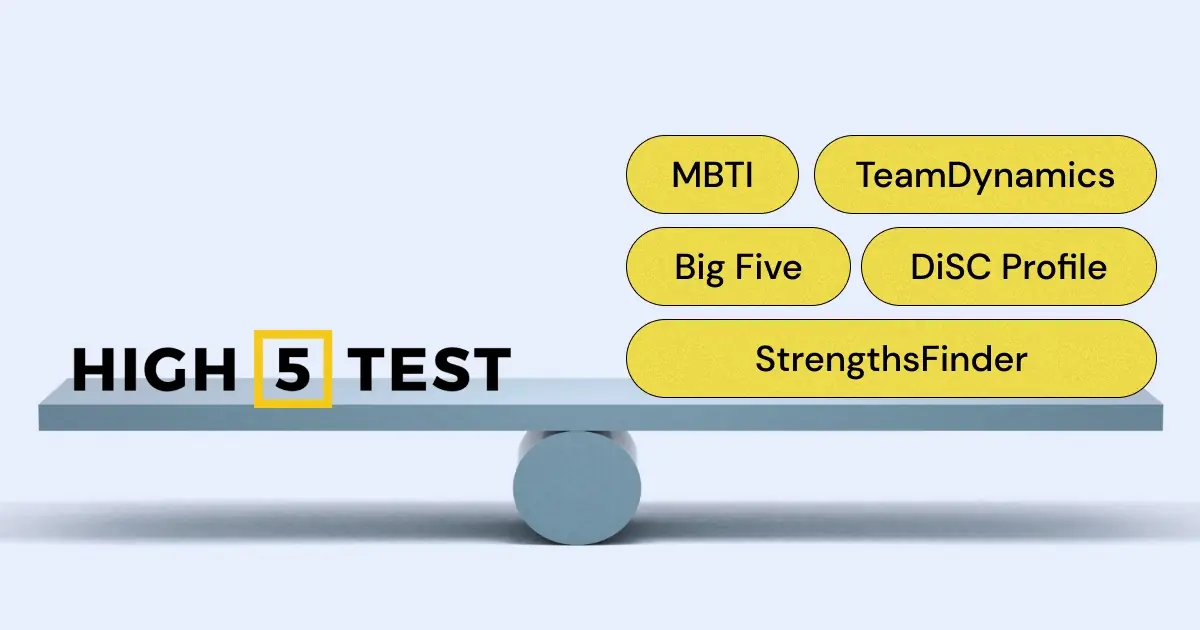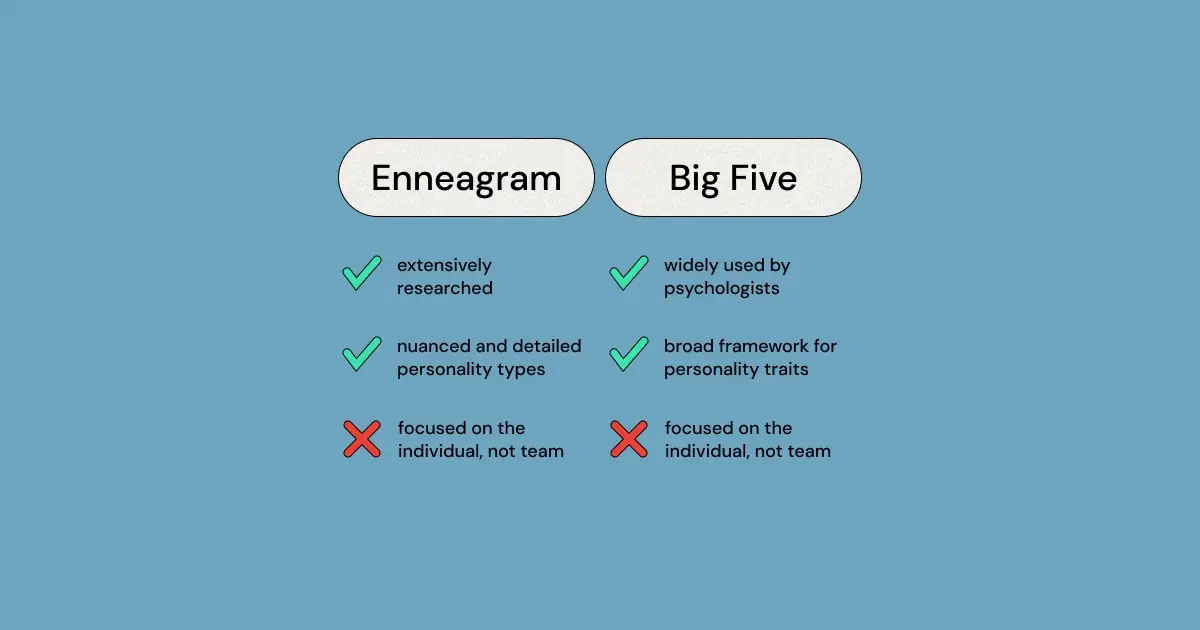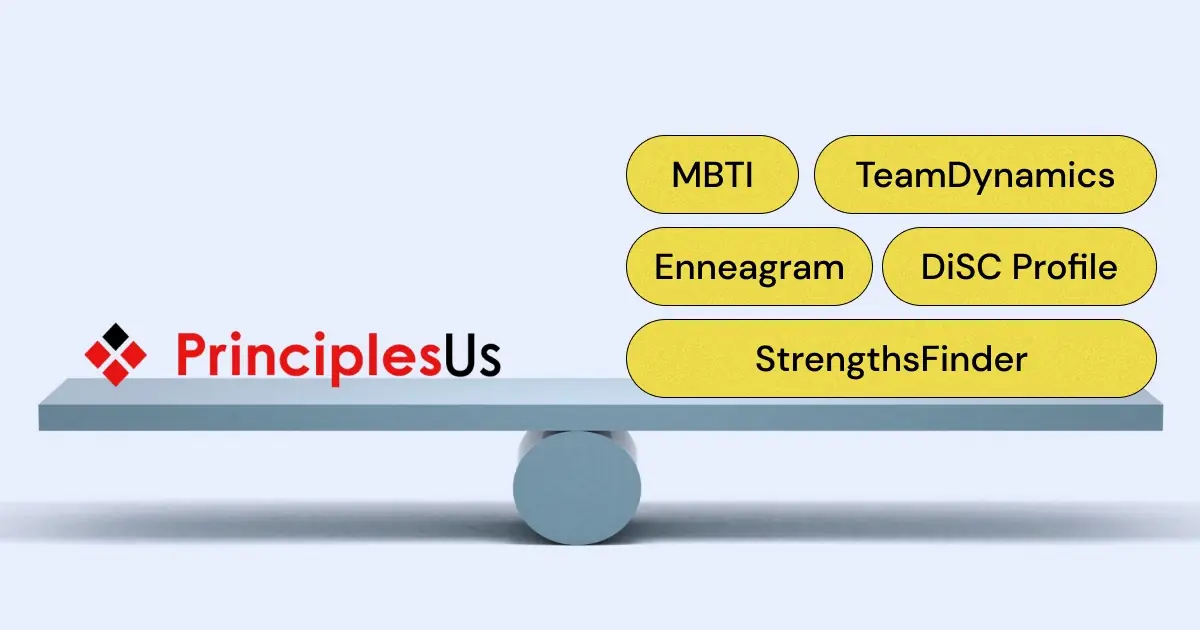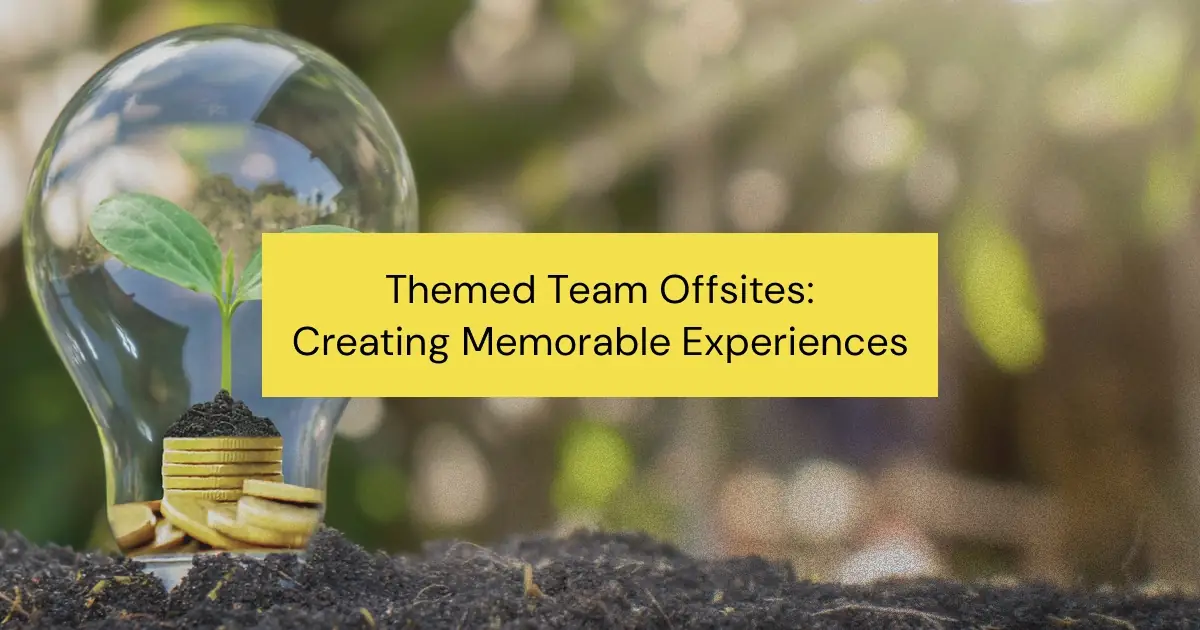The HIGH5 strengths test (also sometimes called the HIGH5 Test) has gained popularity as a free tool to help individuals discover their strengths. While it’s a great starting point, it might not be the best fit for everyone, especially if you’re looking for a more comprehensive analysis or a tool better suited for team environments.
If you’re seeking an alternative that offers deeper insights or is more aligned with professional and team settings, you’re in the right place. In this post, we’ll explore five top alternatives to the HIGH5 personality test: StrengthsFinder, TeamDynamics, Big Five, DiSC Profile, and MBTI. Each of these tests has unique strengths and can provide you with a different perspective on your personality and how you work with others.
Whether you’re a manager looking to improve team dynamics, or simply interested in understanding yourself better, these alternatives will offer valuable insights and tools to help you succeed.
Alternative #1: StrengthsFinder (Gallup CliftonStrengths)
A Comprehensive Tool for Uncovering Your Strengths: If you’re looking for a strengths-based assessment that offers more depth and professional applicability than HIGH5, StrengthsFinder is an excellent choice. Its research-backed approach and practical tools make it ideal for both personal and team development. With StrengthsFinder, you’re not just discovering your strengths—you’re learning how to use them to achieve greater success.
StrengthsFinder, now known as CliftonStrengths, is a popular assessment developed by Gallup that identifies an individual’s top strengths out of 34 potential talent themes. It’s widely used in both personal and professional settings to help people understand their innate abilities and how to leverage them effectively. With over 20 million users worldwide, StrengthsFinder has become a trusted tool for personal development.
What Makes StrengthsFinder Special
What sets StrengthsFinder apart is its depth and focus on strengths rather than weaknesses. The assessment is based on decades of research and is designed to highlight the unique talents that make individuals effective in their roles. By focusing on what you naturally do best, StrengthsFinder encourages positive self-awareness and growth, helping you to build on your strongest attributes rather than trying to fix perceived weaknesses.
Practical Applications of StrengthsFinder
StrengthsFinder is particularly valuable in professional environments where team dynamics and individual contributions are crucial. Managers can use the insights from this assessment to build stronger, more cohesive teams by assigning roles that align with each person’s strengths. Individuals can use it to enhance their career development by focusing on roles and tasks that best match their natural talents. It’s also a powerful tool for improving collaboration, as understanding each team member’s strengths can lead to better communication and teamwork.
Want to use StrengthsFinder for team building? Check out our free CliftonStrengths team building workshop download!
StrengthsFinder vs. HIGH5
While HIGH5 is a free tool that provides a quick snapshot of your top strengths, StrengthsFinder offers a more comprehensive and research-backed analysis. StrengthsFinder delves deeper into your personality by identifying not just your top strengths but also how they interact with each other. This deeper insight makes it particularly useful for those looking to apply their strengths in a professional setting. Additionally, StrengthsFinder offers more robust resources and support, including books, coaching programs, and an active community, which HIGH5 lacks.
Alternative #2: TeamDynamics
The Ideal Tool for Building Stronger Teams: If your goal is to build a stronger, more effective team, TeamDynamics is the ideal alternative to HIGH5. Its unique focus on team dynamics and collective behavior provides deeper insights that are crucial for improving collaboration and achieving shared goals. With TeamDynamics, you’re not just identifying strengths—you’re using them to create a more harmonious and productive team environment.
TeamDynamics is a unique personality assessment specifically designed for professional environments. Unlike individual-focused tests, TeamDynamics evaluates both the collective behaviors of a team and how individual preferences align with team norms. This dual focus makes it a powerful tool for improving team dynamics, enhancing collaboration, and aligning individual strengths with the overall goals of the team. Whether you’re managing a small project group or an entire department, TeamDynamics offers valuable insights that can drive better teamwork and productivity.
What Makes TeamDynamics Special
What sets TeamDynamics apart is its emphasis on the team as a whole rather than just the individual. By analyzing how each member’s preferences and behaviors contribute to the team’s collective dynamic, TeamDynamics provides actionable insights that can help teams work more effectively together. This approach is particularly useful in identifying areas where individual strengths may complement or clash with team norms, enabling managers to make informed decisions about role assignments, team composition, and conflict resolution. TeamDynamics goes beyond simply identifying strengths; it helps teams leverage those strengths to achieve shared success.
Want to see what TeamDynamics offers? Download a preview of TeamDynamics today!
Practical Applications of TeamDynamics
TeamDynamics is an invaluable tool for any organization looking to improve team performance and cohesion. Managers can use the insights from TeamDynamics to better understand how their team functions as a unit and to make strategic adjustments that enhance collaboration. For example, by identifying where individual preferences align or diverge from team norms, leaders can tailor their management approaches to better fit the unique needs of their team. TeamDynamics is also effective in onboarding new team members, as it helps integrate them into the existing team culture by highlighting areas of alignment and potential friction.
TeamDynamics vs. HIGH5
While HIGH5 is effective for identifying personal strengths, it doesn’t provide the same level of insight into how those strengths fit into a team setting. TeamDynamics, on the other hand, is designed specifically for understanding and improving team dynamics. Its focus on evaluating the collective behavior of a team and how individual preferences align with team norms makes it a superior choice for workplace settings, particularly when the goal is to build stronger, more cohesive teams. Unlike HIGH5, which offers a snapshot of individual strengths, TeamDynamics provides a comprehensive view of how those strengths contribute to or detract from team success.
{{inline-cta}}
Alternative #3: Big Five Personality Traits
The Gold Standard in Personality Research: If you’re seeking a personality assessment that offers depth, scientific validity, and wide-ranging applications, the Big Five is an excellent alternative to HIGH5. Its detailed insights into your personality can help you make more informed decisions in both your personal and professional life. With the Big Five, you gain a comprehensive understanding of yourself that goes beyond just strengths to include the full spectrum of your personality.
The Big Five Personality Traits—Openness, Conscientiousness, Extraversion, Agreeableness, and Neuroticism—form the foundation of one of the most widely accepted models in personality psychology. Unlike many personality tests, the Big Five is grounded in decades of scientific research and provides a comprehensive picture of an individual’s personality across these five key dimensions. It’s commonly used in both academic research and professional settings to understand behavior and predict job performance.
What Makes the Big Five Special
What makes the Big Five particularly special is its empirical backing and its ability to provide a nuanced view of personality. Unlike other assessments that categorize individuals into specific types, the Big Five measures personality on a spectrum, offering a more detailed and accurate depiction of how individuals vary in each of the five traits. This makes the Big Five a powerful tool for understanding the complexity of human behavior and for tailoring personal and professional development strategies accordingly.
Practical Applications of the Big Five
The Big Five is highly versatile and can be applied in various contexts, from hiring and team building to personal growth. In professional environments, the Big Five helps managers and HR professionals better understand employee behavior and predict job performance, leading to more informed hiring decisions and improved team dynamics. On a personal level, individuals can use the Big Five to gain insight into their own behavior, strengths, and areas for growth, which can guide career choices and interpersonal relationships.
Want to use Big Five Personality Traits for team building? Check out our Big Five team building tool!
Big Five vs. HIGH5
While HIGH5 is useful for quickly identifying top strengths, the Big Five offers a much broader and scientifically validated analysis of personality. The Big Five doesn’t just tell you what your strengths are; it provides a detailed understanding of your personality across multiple dimensions, making it a more comprehensive tool. For those looking for a well-rounded view of their personality that can inform both personal and professional development, the Big Five is a superior choice. Additionally, the Big Five’s emphasis on scientific accuracy and its widespread acceptance in the psychological community give it a level of credibility that HIGH5 lacks.
Alternative #4: DiSC Profile
A Practical Tool for Enhancing Workplace Communication: If you’re searching for a personality assessment that offers clear, actionable insights into workplace behavior, the DiSC Profile is an excellent alternative to HIGH5. Its focus on communication styles and its practical applications in the workplace make it a valuable tool for both individuals and teams. With DiSC, you’re not just discovering your strengths—you’re learning how to use them to work better with others.
The DiSC Profile is a widely used personality assessment that categorizes individuals into four primary behavior styles: Dominance, Influence, Steadiness, and Conscientiousness. It’s specifically designed to help people understand their own behavior and the behavior of others in a workplace setting. The DiSC Profile is commonly used in team-building exercises, leadership training, and personal development, making it a popular choice for improving communication and collaboration in professional environments.
What Makes DiSC Profile Special
What makes the DiSC Profile stand out is its simplicity and practicality. Unlike more complex personality assessments, DiSC is easy to understand and immediately applicable. By focusing on behavior styles rather than broad personality traits, DiSC provides actionable insights that can be used to improve workplace dynamics. It’s particularly effective in helping individuals and teams understand how different communication styles can impact collaboration, making it a powerful tool for fostering better working relationships.
Practical Applications of DiSC Profile
DiSC Profile is especially valuable in professional settings where effective communication and teamwork are essential. Managers can use DiSC to better understand the communication styles of their team members, leading to more tailored management strategies and improved team cohesion. For individuals, DiSC can help identify their preferred ways of interacting with others, which can be crucial for career development and improving interpersonal relationships. Additionally, DiSC is often used in conflict resolution, helping teams navigate and manage differences in behavior styles.
Want to use DiSC for team building? Check out our free DiSC team communication workshop download!
DiSC Profile vs. HIGH5
While HIGH5 is useful for identifying personal strengths, the DiSC Profile offers more targeted insights into how those strengths translate into behavior in the workplace. DiSC’s focus on communication and behavior styles makes it particularly effective for teams looking to improve collaboration and reduce conflict. Unlike HIGH5, which provides a general overview of strengths, DiSC gives specific guidance on how to interact with others based on your behavior style, making it a more practical tool for workplace application. Additionally, DiSC’s widespread use in professional development programs and its emphasis on communication set it apart as a go-to resource for enhancing team dynamics.
Alternative #5: MBTI (Myers-Briggs Type Indicator)
Unlocking the Power of Personality Types: If you’re looking for a personality assessment that offers a deep and well-rounded understanding of how you and others think and behave, MBTI is a strong alternative to HIGH5. Its detailed personality types and practical applications in the workplace make it an invaluable tool for both personal growth and team development. With MBTI, you gain insights that go beyond strengths, helping you navigate and improve your interactions in all areas of life.
The Myers-Briggs Type Indicator (MBTI) is one of the most well-known personality assessments in the world. It categorizes individuals into 16 distinct personality types based on preferences in four areas: Extraversion vs. Introversion, Sensing vs. Intuition, Thinking vs. Feeling, and Judging vs. Perceiving. MBTI has been widely used in both personal and professional contexts to help people better understand themselves and how they interact with others.
What Makes MBTI Special
What sets MBTI apart is its ability to provide a detailed and relatable portrait of an individual’s personality. By placing people into one of 16 types, MBTI offers a framework that is easy to understand and apply in everyday life. This structure allows individuals to quickly grasp their natural tendencies, as well as how these tendencies influence their interactions with others. MBTI’s focus on personality types also makes it highly versatile, applicable in everything from career counseling to team-building exercises.
Practical Applications of MBTI
MBTI is widely used in professional settings to improve team dynamics, enhance leadership skills, and guide career development. Managers can use MBTI to better understand the personality types of their team members, enabling them to assign roles that align with each person’s natural preferences. It’s also a valuable tool for improving communication, as understanding the different MBTI types can lead to more effective collaboration. On a personal level, MBTI helps individuals gain insight into their decision-making processes, communication styles, and potential areas for growth.
Want to use MBTI for team building? Check out our free MBTI team building workshop download!
MBTI vs. HIGH5
While HIGH5 focuses on identifying a person’s top strengths, MBTI offers a broader and more comprehensive understanding of personality. MBTI’s framework of 16 types allows for a deeper exploration of how your personality influences your behavior, decision-making, and interactions with others. This makes MBTI particularly valuable in team settings, where understanding different personality types can lead to improved collaboration and reduced conflict. Additionally, MBTI’s widespread recognition and the wealth of resources available for each personality type provide a level of support and applicability that HIGH5 does not match.
Comparing the Top 5 Alternatives to HIGH5
So which of these leading alternatives to the HIGH5 strengths test is right for you? Take a look at this comparison table to find out!
| Tool |
Primary Focus |
Pricing |
Best For |
Key Strengths |
| StrengthsFinder (Gallup CliftonStrengths) |
Individual Strengths |
One-time Payment |
Career growth and personal development |
34 talent themes, strengths-focused, research-backed |
| TeamDynamics |
Team Synergy and Dynamics |
One-time Payment |
Managers and teams seeking collaboration |
Team-oriented, evaluates collective behaviors, practical for team building |
| Big Five Personality Traits |
Broad Personality Analysis |
Varies (Some Free Versions Available) |
Comprehensive personality profiling |
Scientific validation, five-dimensional analysis, versatile applications |
| DiSC Profile |
Behavioral Styles |
Subscription/One-time Payment |
Enhancing workplace communication |
Simple, practical, improves workplace dynamics |
| MBTI (Myers-Briggs Type Indicator) |
Personality Preferences |
One-time Payment |
Career alignment and personal growth |
16 types, detailed, globally recognized |
Conclusion
When it comes to understanding strengths and personality in a professional setting, there’s no one-size-fits-all solution. Each of the assessments we’ve compared—StrengthsFinder, TeamDynamics, Big Five, DiSC, and MBTI—offers unique insights that can be valuable depending on your goals.
StrengthsFinder provides a deep dive into your personal strengths, helping you understand what you do best. The Big Five gives a broad, research-backed view of your personality traits, while DiSC and MBTI offer practical tools for improving communication and collaboration. However, when it comes to team building and optimizing team dynamics, TeamDynamics stands out as the most effective choice.
Unlike the other assessments, TeamDynamics doesn’t just focus on the individual—it looks at how each team member’s preferences and behaviors align with the team’s overall dynamic. This makes it an invaluable tool for managers and teams who want to work more cohesively and achieve shared goals. If your primary objective is to enhance team performance, foster better collaboration, and create a more harmonious workplace, TeamDynamics is likely the right choice.
In the end, the best personality test is the one that aligns with your specific needs. But in most workplace settings, where teamwork and collaboration are key, TeamDynamics offers the comprehensive insights you need to drive success. Try TeamDynamics today and see how it can unlock your team’s full potential.


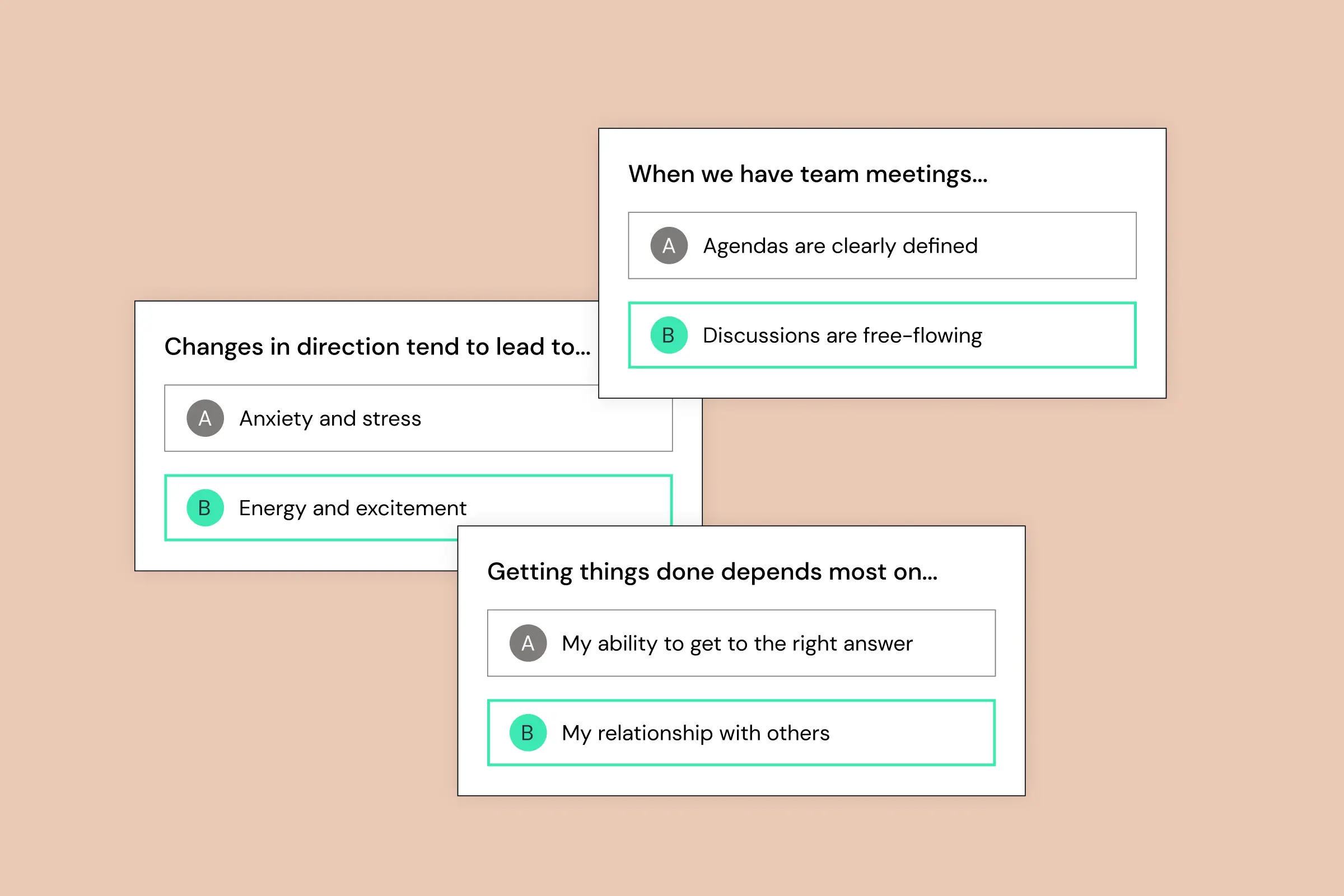

.png)
